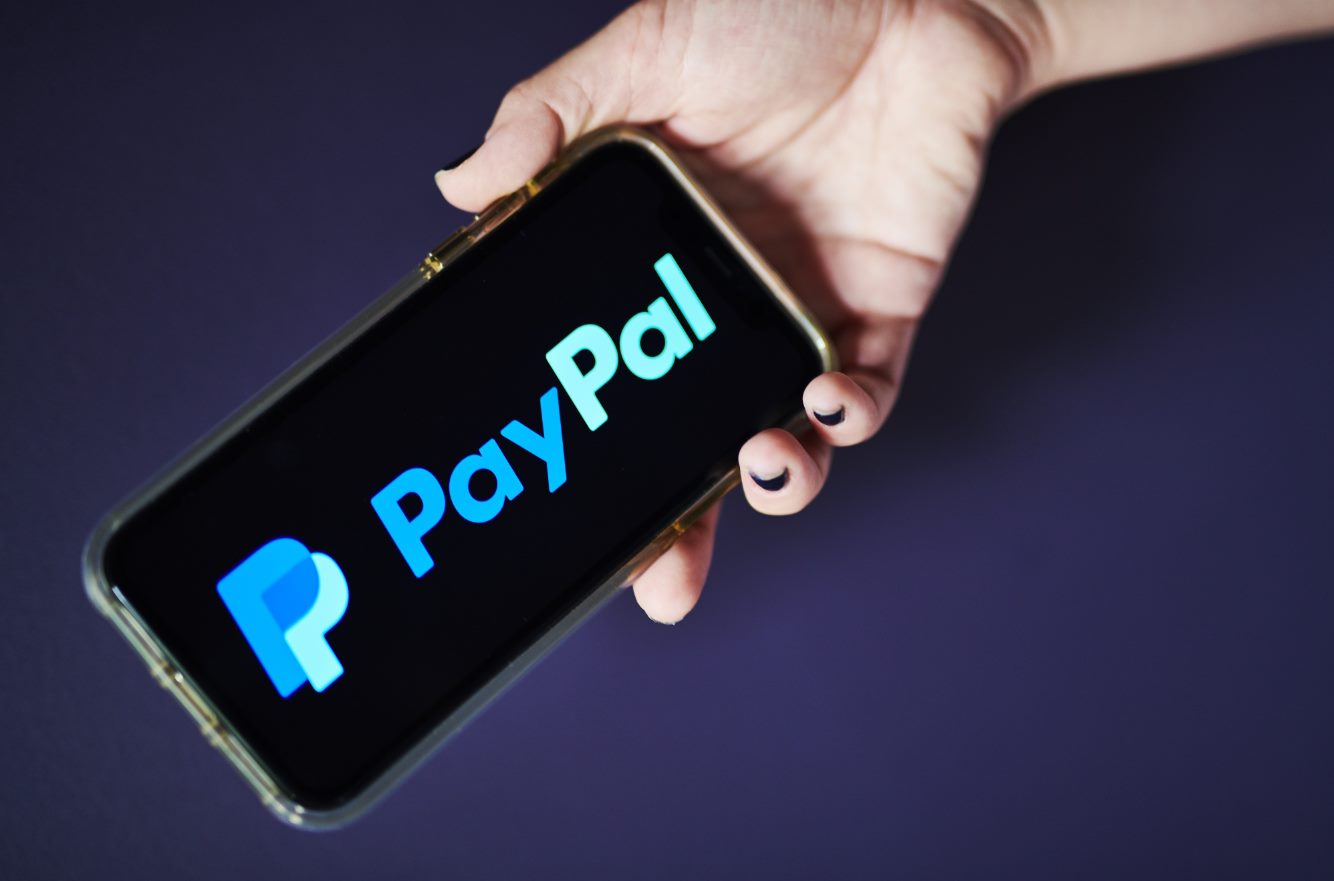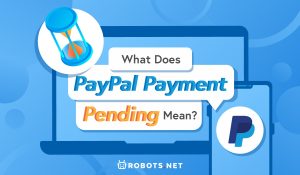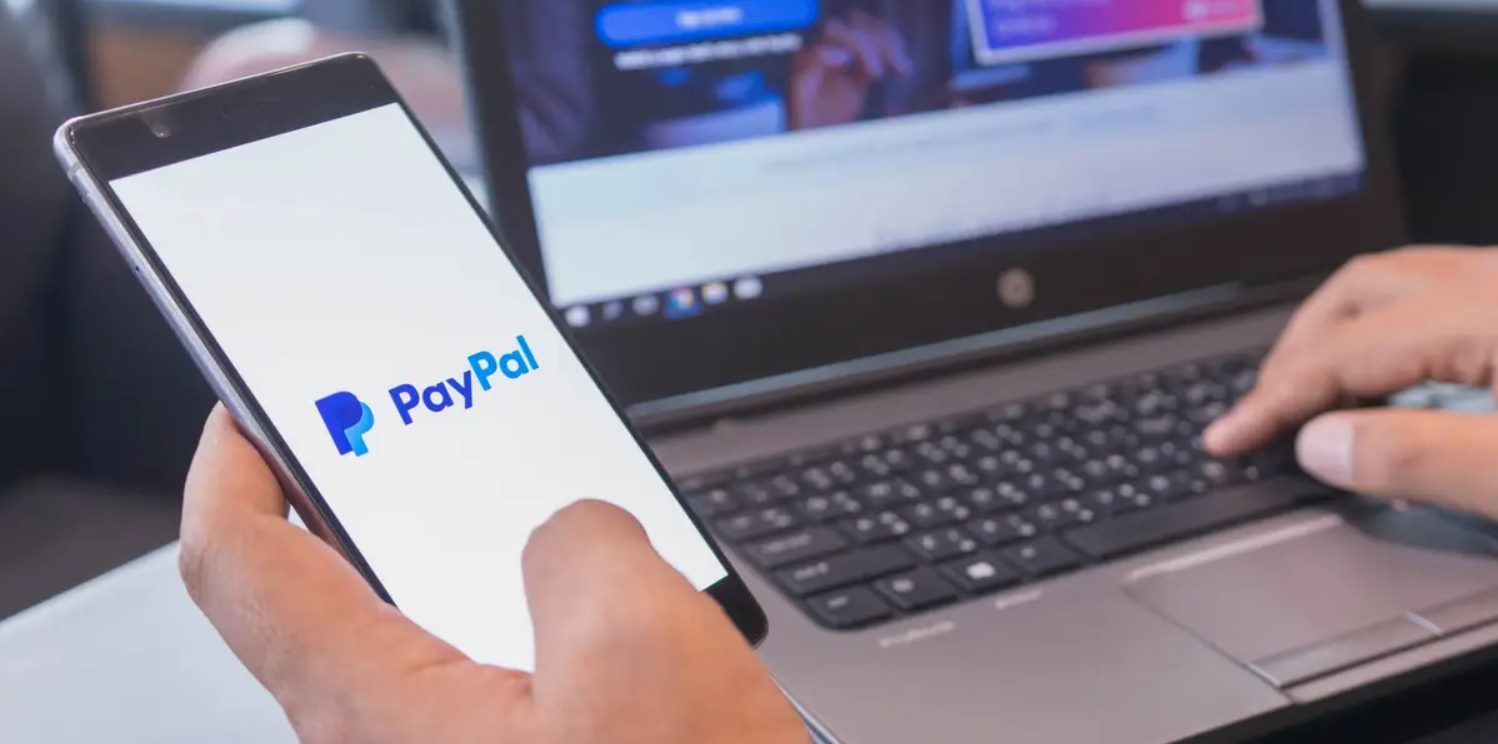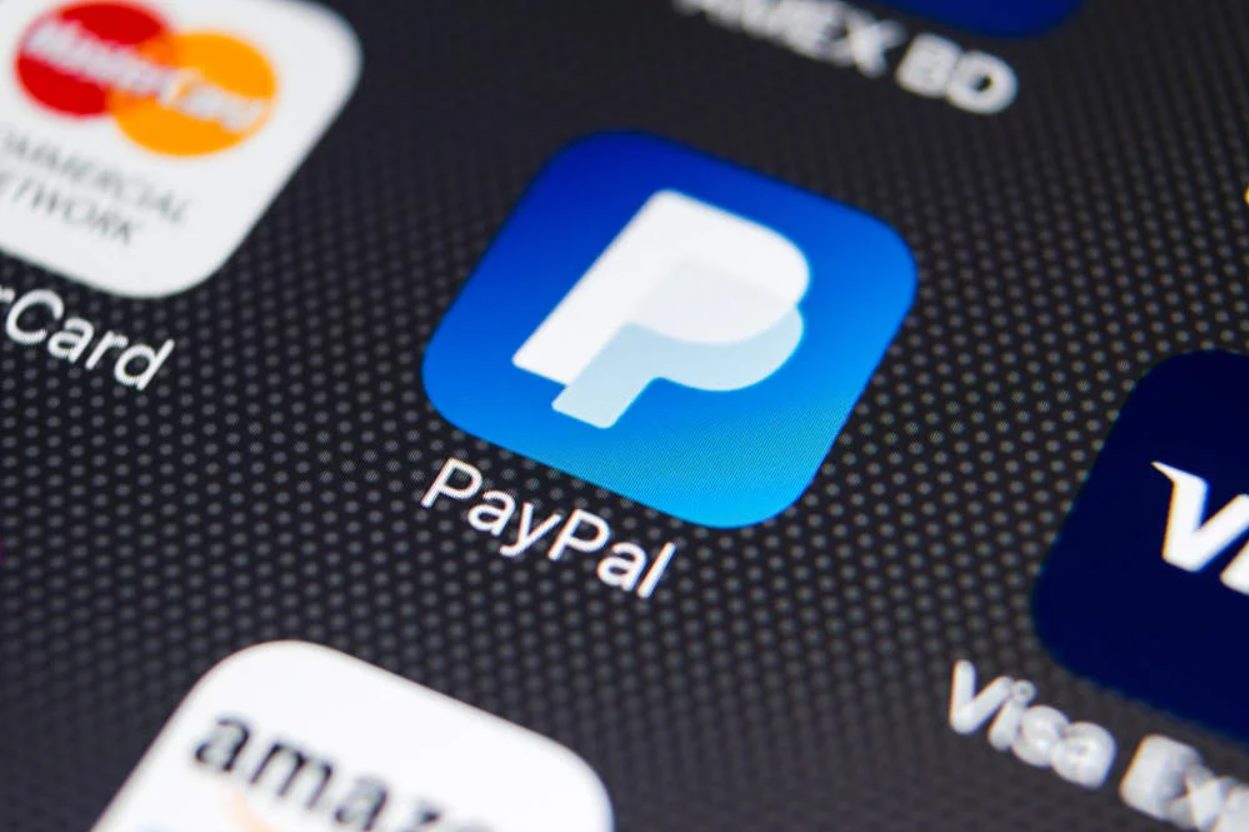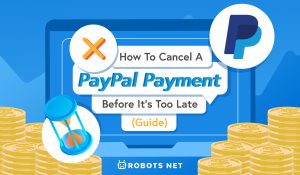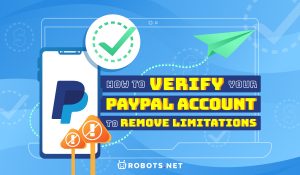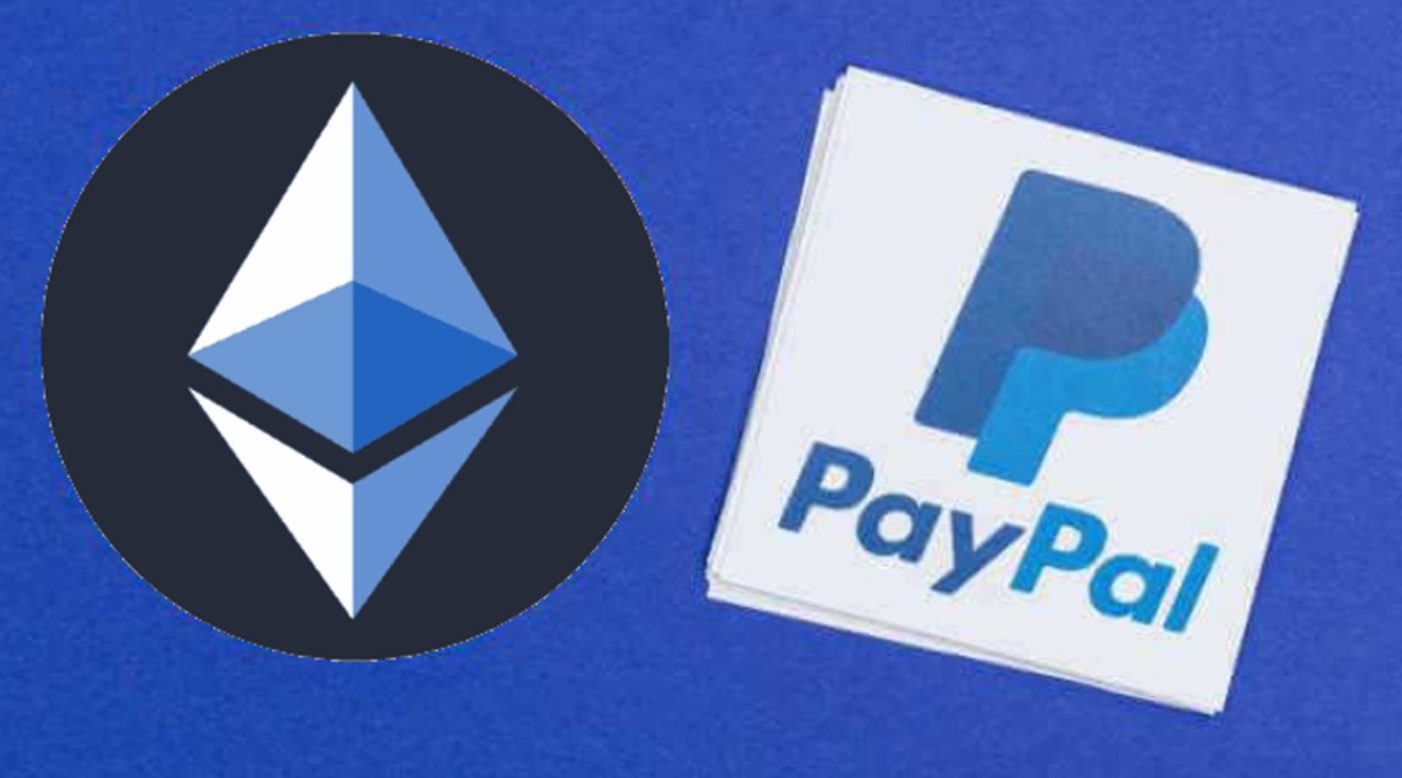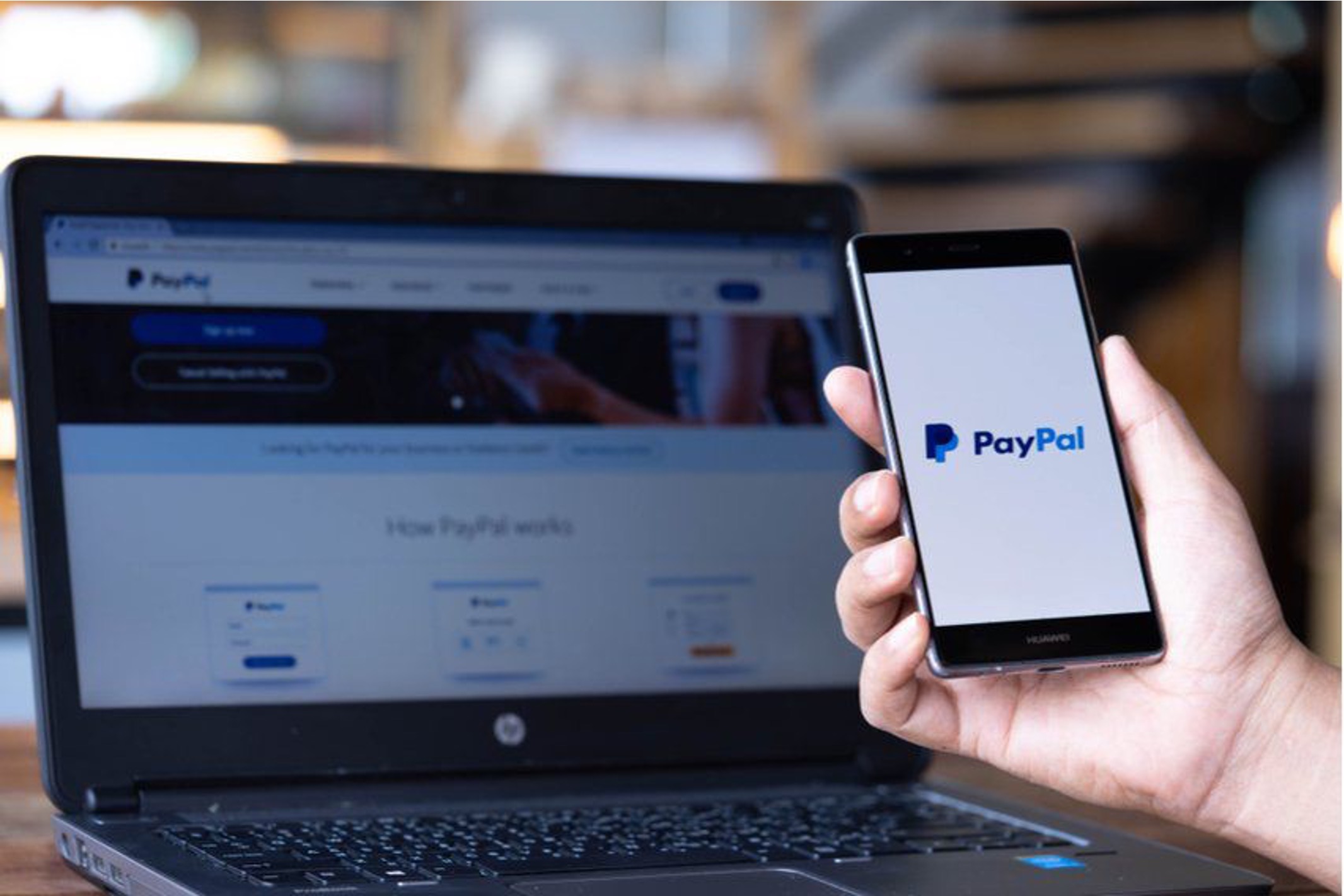Introduction
Welcome to the world of online payments and digital transactions! In this fast-paced digital era, having a secure and convenient payment method is essential. One such popular and trusted platform is PayPal. With millions of users worldwide, PayPal has revolutionized the way we transfer money, make online purchases, and receive payments.
PayPal provides a seamless and secure avenue for individuals and businesses to send and receive payments electronically. It offers a wide range of payment solutions, including online invoicing, payment buttons, and seller protection features, making it a preferred choice for e-commerce transactions.
Setting up your PayPal ID is the first step in leveraging the benefits and convenience that PayPal offers. Your PayPal ID is essentially your unique identifier within the PayPal system, similar to a username or email address. This ID allows you to receive payments, make purchases, and transfer funds through your PayPal account.
In this article, we will guide you through the process of creating and finding your PayPal ID, as well as outlining the steps to link your bank account and verify your PayPal account. We will also highlight the benefits of using PayPal and provide tips on maintaining security when sharing your PayPal ID online.
Whether you are an individual looking to buy products or services online or a business owner seeking a reliable payment solution, understanding and utilizing your PayPal ID will enable you to navigate the digital payment landscape with confidence and ease.
What is PayPal?
PayPal is an online payment platform that allows users to make safe and secure transactions over the internet. It was founded in 1998 and quickly gained popularity for its simplicity and convenience. PayPal acts as a middleman between buyers and sellers, providing a secure way to transfer funds without sharing sensitive financial information.
With PayPal, users can create an account and link it to their credit card, debit card, or bank account. This allows them to send and receive money electronically, pay for online purchases, and even receive payments for goods or services they sell online. PayPal supports transactions in multiple currencies, making it ideal for international transactions as well.
One of the key advantages of using PayPal is its widespread acceptance. Many online retailers, marketplaces, and service providers incorporate PayPal as a preferred payment method. This means that users can shop and pay using their PayPal account without having to repeatedly enter payment details, providing a fast and convenient checkout experience.
Apart from its usability, PayPal offers robust buyer and seller protection mechanisms. Buyers can open disputes if they encounter issues with their purchases, allowing PayPal to intervene and resolve the conflict. Sellers, on the other hand, benefit from seller protection programs that safeguard them against fraudulent chargebacks or unauthorized transactions.
PayPal also offers additional features such as recurring payments, invoicing, and fundraising tools, making it a versatile platform for individuals and businesses alike. Its user-friendly interface and mobile app further enhance accessibility, allowing users to manage their transactions on the go.
Overall, PayPal has transformed the way people send and receive money online. It has become a trusted and widely recognized name in the world of digital payments, providing a safe and secure platform for individuals and businesses to transact with confidence.
Setting Up Your PayPal ID
Creating your PayPal ID is a straightforward process that requires a few simple steps. Here’s a guide to help you set up your PayPal ID:
- Visit the PayPal website: Start by visiting the official PayPal website (www.paypal.com) and click on the “Sign Up” or “Get Started” button.
- Choose the account type: Select the type of PayPal account you want to create. PayPal offers two main types – Personal and Business. Choose the one that best suits your needs.
- Provide your details: Fill in your personal information, including your name, email address, and password. Make sure to choose a strong and unique password to protect your account.
- Link a payment method: Next, you’ll need to link a payment method to your PayPal account. You can choose to link a credit card, debit card, or bank account. This allows you to fund your PayPal account and make payments or receive money.
- Verify your email address: After providing your details and linking a payment method, you’ll need to verify your email address. PayPal will send a verification email to the address you provided. Click the verification link in the email to complete the process.
- Complete additional verification (if required): Depending on your location and the type of account you create, PayPal may require additional verification steps. This can include providing identification documents or confirming your address.
- Set up security measures: To enhance the security of your PayPal account, consider enabling two-factor authentication or adding a security key. These additional layers of protection help safeguard your account from unauthorized access.
Once you have completed these steps, your PayPal ID will be created and ready for use. Remember to keep your login credentials secure and regularly monitor your account for any unauthorized activity.
Setting up your PayPal ID is a crucial first step in utilizing the platform’s array of features and taking advantage of its secure and convenient payment solutions.
How to Create a PayPal Account
Creating a PayPal account is a simple process that only takes a few minutes. Here’s a step-by-step guide to help you set up your PayPal account:
- Visit the PayPal website: Begin by visiting the official website of PayPal at www.paypal.com
- Click on “Sign Up” or “Get Started”: Look for the “Sign Up” or “Get Started” button on the homepage and click on it to initiate the account creation process.
- Choose your account type: PayPal offers two types of accounts – Personal and Business. Select the account type that aligns with your needs.
- Fill out the required information: Provide your name, email address, and create a strong password. Ensure that the password is unique and not easily guessable to protect your account.
- Enter your personal details: PayPal may require additional information, such as your address and phone number, to verify your identity and enhance security.
- Link a payment method: Connect your bank account, credit card, or debit card to your PayPal account. This will be used to fund your PayPal purchases and receive money.
- Agree to the terms and conditions: Read and agree to PayPal’s terms and conditions to proceed with the account creation process.
- Verify your email address: PayPal will send a verification email to the email address you provided during registration. Open the email and click on the verification link to verify your account.
Once you have completed these steps, your PayPal account will be created, and you can start using it for online purchases, sending and receiving money, and more. Remember to keep your account login information secure and regularly monitor your transactions to ensure your account remains protected.
Creating a PayPal account is a quick and straightforward process, enabling you to enjoy the convenience and security that PayPal offers for your online transactions.
Linking Your Bank Account with PayPal
Linking your bank account to your PayPal account allows you to easily transfer funds between your bank and PayPal, make purchases directly from your bank account, and withdraw money from your PayPal balance to your bank. Here’s how you can link your bank account with PayPal:
- Log in to your PayPal account: Go to the PayPal website and log in to your account using your PayPal ID and password.
- Navigate to your PayPal Wallet: Once you’re logged in, locate and click on the “Wallet” or “Balance” tab, which will take you to your PayPal wallet.
- Add a bank account: Under the “Bank accounts” section, click on the “Link a bank account” or “Add bank account” option.
- Select your bank and account type: Choose your bank from the list provided or enter your bank’s routing number and account number manually. Additionally, select whether it’s a checking or savings account.
- Verify ownership of your bank account: PayPal will initiate a small deposit to your bank account, typically ranging from a few cents to a couple of dollars. Check your bank statement or contact your bank to find the exact amount of the deposit.
- Confirm your bank account: Once you know the deposit amount, go back to your PayPal account and navigate to the “Wallet” section. Click on the bank account you just added and enter the exact deposit amount to confirm your ownership.
After completing these steps, your bank account will be successfully linked to your PayPal account. You can now use it to transfer funds, make purchases, and withdraw money to your bank as needed. Remember to keep your bank account information and login details secure to protect your financial transactions.
Linking your bank account with PayPal provides added convenience and flexibility, allowing you to seamlessly manage your funds and enjoy a smooth payment experience for your online transactions.
Verifying Your PayPal Account
Verifying your PayPal account adds an extra layer of security and increases your transaction limits. It also boosts your credibility when buying and selling online. Here’s how you can verify your PayPal account:
- Log in to your PayPal account: Go to the PayPal website and log in using your PayPal ID and password.
- Navigate to your PayPal Wallet: Once logged in, click on the “Wallet” or “Balance” tab, which will take you to your PayPal wallet.
- Confirm your email address: If you haven’t already done so during the account setup, PayPal will ask you to verify your email address. Check your inbox for a verification email from PayPal and follow the instructions to confirm your email.
- Link and confirm your bank account or credit card: To verify your account fully, you need to link and confirm a bank account or credit card. This involves providing the necessary bank or card details and, in some cases, authorizing PayPal to make a small charge or deposit to verify ownership.
- Provide additional documentation (if requested): Depending on your country and the specific requirements, PayPal may ask for additional documentation to verify your identity, such as a copy of your ID or proof of address. Follow the instructions provided by PayPal to submit the required documents.
- Wait for confirmation from PayPal: Once you have completed the verification steps, PayPal will review the information provided. You will receive a confirmation email once your account is fully verified, usually within a few days.
Verifying your PayPal account adds an additional layer of trust and security, especially when conducting higher-value transactions. It also allows you to enjoy higher sending and withdrawal limits, making it easier to manage your finances on the platform.
Note that the specific verification requirements may vary depending on your country of residence and the type of account you have. It is important to follow PayPal’s instructions and provide accurate and up-to-date information during the verification process.
By taking the time to verify your PayPal account, you can enhance your security and gain access to additional features on the platform, ensuring a more secure and seamless online payment experience.
Finding Your PayPal ID
Your PayPal ID serves as a unique identifier within the PayPal system, allowing you to send and receive payments, make purchases, and access various PayPal features. Here are a few ways to find your PayPal ID:
- Log in to your PayPal account: Start by visiting the PayPal website and logging in using your PayPal ID and password.
- Go to your account settings: Once logged in, navigate to your account settings. You can usually find this option by clicking on your profile or the gear icon in the top right corner of your PayPal account.
- Locate your PayPal ID: In the account settings section, you should find your PayPal ID displayed. It is usually listed under your name or profile information. It is also referred to as your email address associated with your PayPal account.
- Check your profile summary: Another way to find your PayPal ID is to check your profile summary page. This page provides an overview of your PayPal account and may display your PayPal ID prominently.
- Review transaction details: If you have recently received or sent a payment through PayPal, you can find your PayPal ID in the transaction details. Look for the sender or recipient information, and you should see your PayPal ID listed there.
- Contact PayPal support: If you are unable to find your PayPal ID through the above methods, you can reach out to PayPal’s customer support for assistance. They will be able to provide you with your PayPal ID after verifying your account details.
Once you have located your PayPal ID, it is important to keep it secure and avoid sharing it with unauthorized individuals. Your PayPal ID is linked to your financial transactions and personal information, so protecting it helps safeguard against potential fraud or unauthorized access.
By finding and memorizing your PayPal ID, you will have easy access to your account and be able to use PayPal’s payment services seamlessly.
Benefits of Using PayPal
PayPal offers a wide range of benefits that make it a popular and reliable platform for online payments and transactions. Here are some key advantages of using PayPal:
- Convenience: PayPal provides a convenient way to send and receive money online. With just a few clicks, you can transfer funds, make purchases, and receive payments, all from the comfort of your own home.
- Global acceptance: PayPal is widely accepted by online retailers, marketplaces, and service providers around the world. This allows you to make payments or receive money seamlessly across different platforms and countries.
- Security: PayPal prioritizes the security of your financial information. Your payment details are securely stored and protected, reducing the risk of unauthorized access or fraud. Additionally, PayPal offers buyer and seller protection programs to help resolve disputes and safeguard your transactions.
- Flexible funding options: With PayPal, you have the flexibility to choose how you fund your transactions. Whether you link your credit card, debit card, or bank account, PayPal allows you to choose the most suitable payment method for your needs.
- Simplified online shopping: PayPal simplifies the online shopping experience. Instead of repeatedly entering your payment details, you can simply log in to your PayPal account and make purchases with a few clicks, saving time and effort.
- Mobile accessibility: PayPal offers a user-friendly mobile app, allowing you to manage your transactions on the go. With the app, you can send and receive money, check your balances, and even make contactless payments using your smartphone.
- Integration with e-commerce platforms: PayPal seamlessly integrates with various e-commerce platforms, making it easy for businesses to set up online payment systems. This integration enables businesses to expand their customer base and increase sales.
- Currency conversion: PayPal supports transactions in multiple currencies, making it ideal for international businesses and individuals. PayPal automatically converts currencies at competitive rates, eliminating the need for manual calculations or currency exchange services.
These benefits highlight why PayPal has become a trusted and preferred payment solution in the digital landscape. Whether you are an individual looking to make secure online purchases or a business owner seeking efficient payment solutions, PayPal offers a wide range of advantages that enhance convenience, security, and flexibility in your financial transactions.
Security Measures When Sharing Your PayPal ID
Sharing your PayPal ID online requires extra precautions to ensure the security of your account and financial information. Follow these essential security measures when sharing your PayPal ID:
- Be cautious of phishing attempts: Avoid clicking on suspicious links or providing your PayPal ID to unverified sources. Scammers often use fake emails or websites to deceive users and steal their account credentials. Always double-check the authenticity of emails and websites before entering your PayPal ID.
- Use secure and trusted websites: When making online purchases or payments, ensure that you are using secure websites that utilize encryption technology (look for “https” in the URL). This prevents your PayPal ID from being intercepted by hackers during the transaction process.
- Keep your login information confidential: Never share your PayPal ID login details, including your password, with anyone. PayPal will never ask for this information via email or phone. Be cautious of unsolicited requests for your PayPal ID login details, as they are likely to be fraudulent.
- Enable two-factor authentication (2FA): Activate the two-factor authentication feature provided by PayPal. This adds an extra layer of security by requiring a unique security code, in addition to your password, to access your PayPal account. This helps protect your account even if your password is compromised.
- Regularly monitor your account: Keep a close eye on your PayPal account activity. Review your transaction history regularly to identify any unauthorized or suspicious transactions. Report any suspicious activity to PayPal immediately.
- Use strong passwords: Ensure that your PayPal ID has a strong and unique password that includes a combination of uppercase and lowercase letters, numbers, and special characters. Avoid using easily guessable information, such as your name or birthdate, in your password.
- Update your contact information: Make sure your email address and phone number registered with PayPal are current. This ensures that you receive important account-related notifications and alerts regarding your PayPal ID.
- Regularly update your device and software: Keep your computer, smartphone, and other devices updated with the latest security patches and antivirus software. This helps protect against malware and other online threats that could compromise your PayPal ID security.
By following these security measures, you can minimize the risk of unauthorized access to your PayPal ID and safeguard the integrity of your account. It is crucial to remain vigilant and take proactive steps to protect your PayPal ID from potential security breaches.
Common Issues with PayPal ID
While PayPal is a widely trusted platform, users may encounter certain issues or challenges related to their PayPal ID. Here are some common issues that users may experience and potential ways to address them:
- Frozen or limited account: Occasionally, PayPal may freeze or limit your account due to suspicious activity, violation of PayPal’s policies, or security concerns. If you encounter this issue, it is recommended to contact PayPal’s customer support for further assistance. They will guide you through the steps to resolve the issue and restore access to your account.
- Disputes and claims: Disputes may arise between buyers and sellers regarding transactions conducted through PayPal. If you have a dispute, communicate directly with the other party to try and resolve the issue amicably. If unsuccessful, you can escalate the dispute to PayPal’s resolution center for mediation. PayPal will review the case and provide a decision based on the provided evidence.
- Unauthorized transactions: In some cases, users may notice unauthorized transactions on their PayPal account. If you suspect fraudulent activity, immediately report it to PayPal and take steps to secure your account. PayPal’s buyer protection program can help resolve unauthorized transactions and assist in recovering funds.
- Verification issues: Some users may face difficulties in verifying their PayPal account, especially when additional documentation is required. Ensure that you follow PayPal’s verification guidelines carefully and submit the required information promptly. If you encounter any issues during the verification process, contact PayPal’s customer support for guidance.
- Technical glitches: Like any digital platform, PayPal may experience occasional technical issues or outages, which can temporarily disrupt your access to your PayPal ID. If you encounter technical difficulties, check PayPal’s status page or social media channels for updates. Alternatively, contact customer support for assistance.
- Communication with customer support: Some users may find it challenging to reach PayPal’s customer support or experience delays in obtaining assistance. It is recommended to be patient and persistent when seeking support, utilizing the available contact options on the PayPal website and following up as necessary.
- Account security concerns: Users may be concerned about the security of their PayPal ID and the potential for unauthorized access. To mitigate this, follow the security recommendations provided by PayPal, such as enabling two-factor authentication and regularly monitoring your account activity.
It is important to remember that PayPal has a dedicated customer support team available to assist with any issues or concerns you may encounter with your PayPal ID. Promptly addressing and resolving these issues will help ensure a smooth and secure experience when using PayPal for your online payments and transactions.
Conclusion
PayPal has undoubtedly revolutionized the way we transact online, providing a secure and convenient platform for sending and receiving payments, making purchases, and managing our finances. By setting up your PayPal ID, you gain access to a plethora of benefits, including convenience, global acceptance, and robust security measures.
We covered the step-by-step process of creating a PayPal account, linking your bank account, verifying your account, and finding your PayPal ID. These are essential steps to fully utilize the features and functionalities that PayPal offers.
We also discussed the benefits of using PayPal, such as its convenience, global acceptance, and flexible funding options. PayPal’s commitment to security and encryption ensures that your financial information remains protected during transactions.
When sharing your PayPal ID, it is crucial to adhere to security measures such as avoiding phishing attempts, using secure websites, and keeping your login information confidential. Following these precautions helps safeguard against unauthorized access and fraudulent activities.
Additionally, we discussed common issues that users may face with their PayPal ID, such as frozen accounts, disputes, and verification challenges. It’s important to remember that PayPal has dedicated customer support to assist with these issues and restore account functionality.
In conclusion, PayPal provides a convenient and reliable payment solution in today’s digital world. By understanding how to set up and manage your PayPal ID, along with implementing essential security measures, you can confidently navigate the online payment landscape and enjoy seamless transactions.







